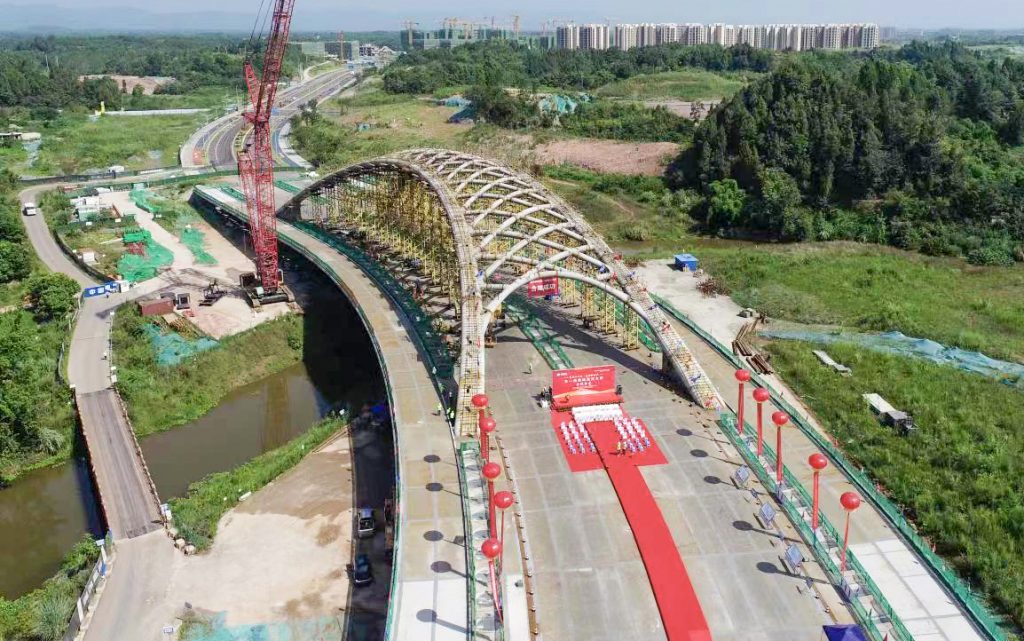
Client: Chengdu Hi-Tech Industrial Development Zone
Design: CFC & SMEDI (Carlos Fernandez Casado / Shanghai Municipal Engineering Design Institute Group)
Main contractor: Sinohydro Bureau 7
Steel fabricator: Jiangsu Huning Steel Structure & Machinery
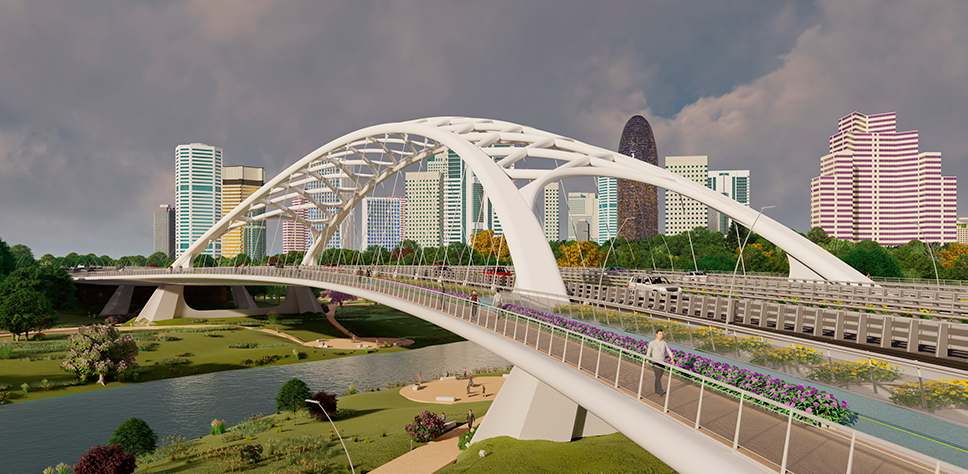
The work is a bridge for road traffic, pedestrian and cyclist of a total length of 280 m. whose distinctive element is a self-signed arch that saves the river of 152 m. span and arrow of 21.7 m.
The formal and resistant particularity of the work comes from the cross of the curved path of the bridge combining the curvature in the plant with an inclination to the interior thus configuring from the structure, a work with a marked spatial dimension that provides a great visual dynamism.
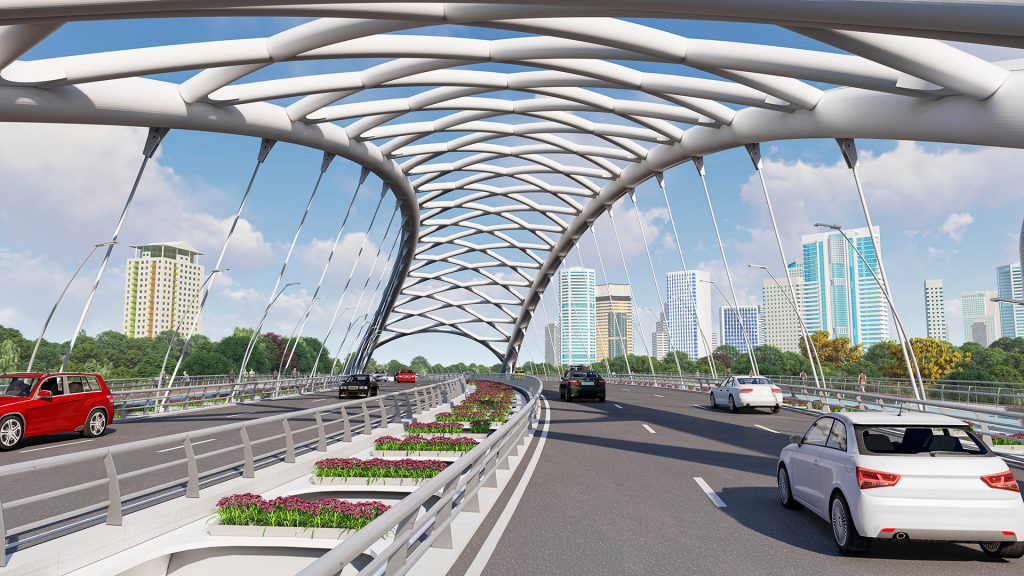
The cross-sectional stresses caused by the winged geometry generated by this arrangement are collected by a higher bracing formed by a lattice of tubes, essential element also in the formal configuration of the work, by having it in a domed shape between the arches to accentuate the spatiality of the structure.
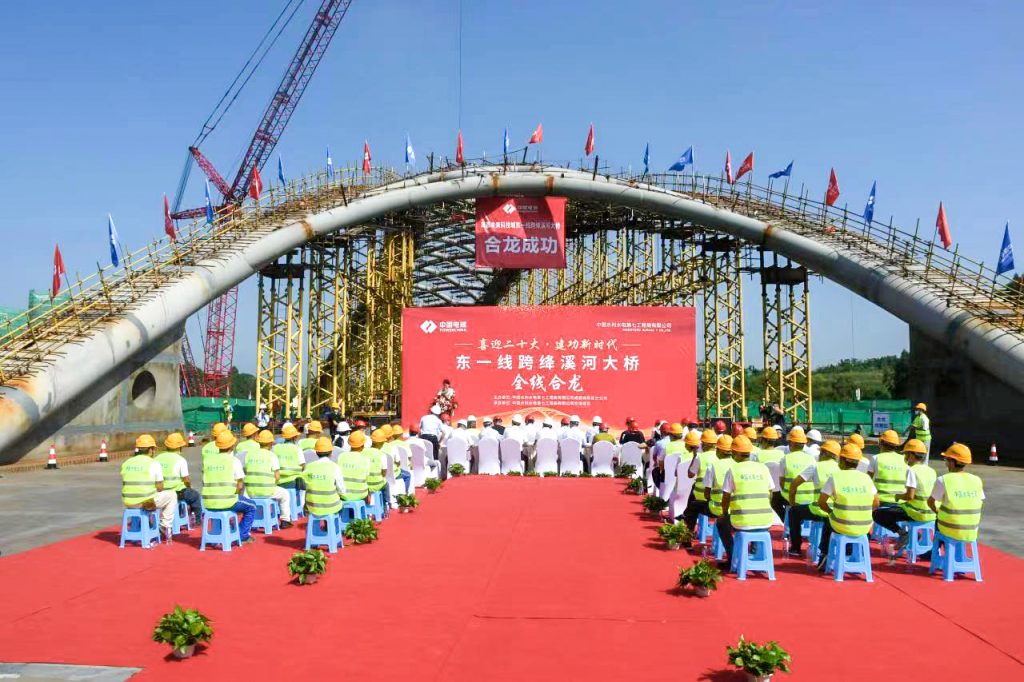
The deck, girder, arch and stiffening tubular elements have been fabricated in the facilities of Jiangsu Huning Steel Structure & Machinery, which participated in the construction and installation of the Bird’s Nest stadium of the 2008 Beijing Olympic Games.
The entire superstructure of the bridge is metallic with a total weight of 7,770 Tm. The repercussion of the orthotropic deck is 470 kg/m2 while the arches and their bracing is 170 kg/m2.
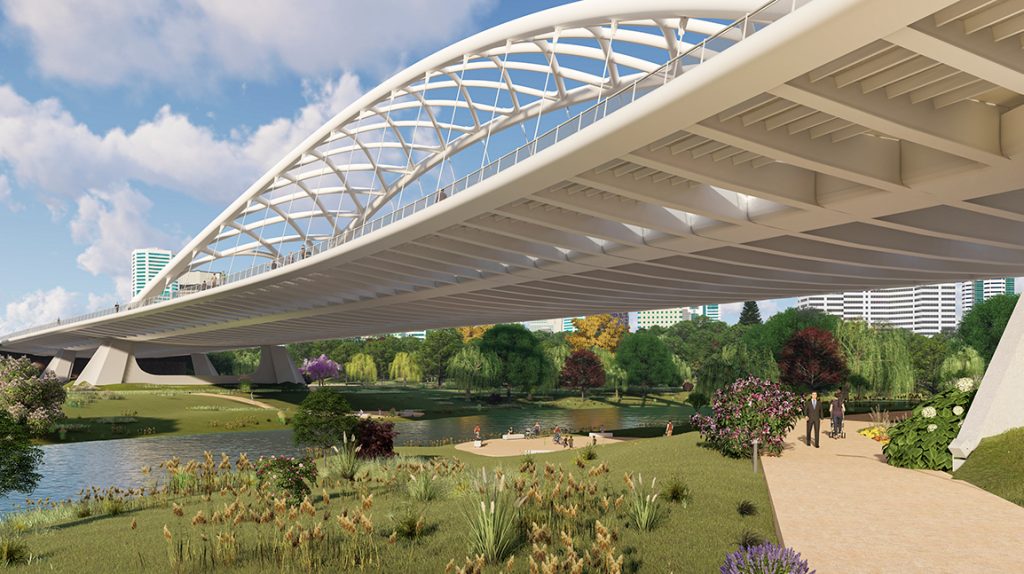
The treatment of pedestrian areas is also a relevant element for setting up the work. They are arranged in exempt elements on the sides supporting in cantilever by ribs that extend the transverse beams. It was intended to keep pedestrians and cyclists away from traffic in order to increase their comfort during the crossing, also using for this purpose the curtain effect that the stone create when interspersed between the two areas.
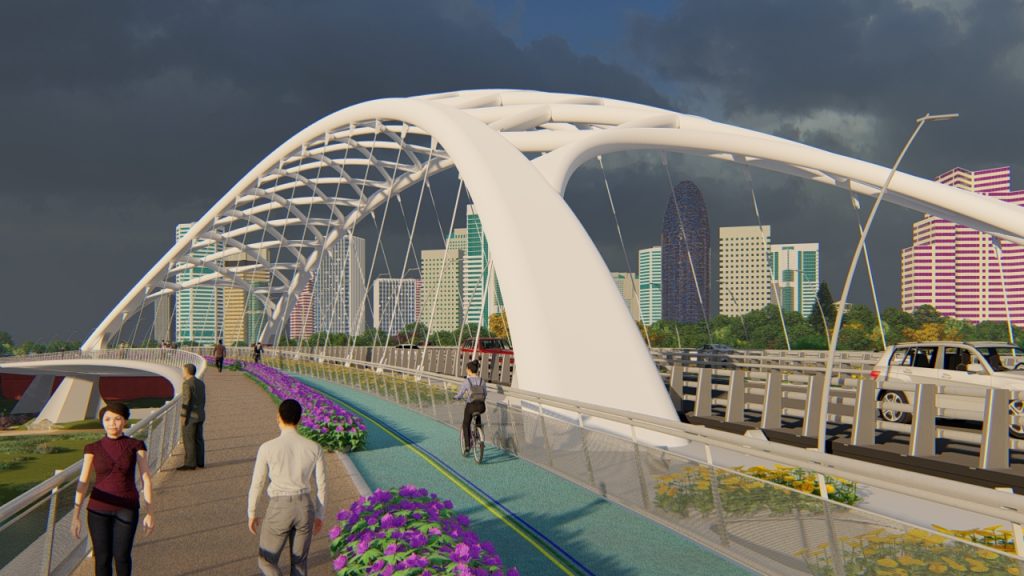
The intermediate space is used to have finishes with plants to continue the treatment with a large presence of trees and gardens outside the bridge.
The final treatment is completed with intense ornamental lighting with RGB LEDs that enhance the work at night.
The CFC-SMEDI group has participated with AECOM, SBP, Zaha Hadid Architects, ARUP and Super Geometry Architects in the restricted international competition convened by the authorities of Chengdu City, China, called Sollicitations of Proposals for the Conceptual Design Scheme of Six Bridges in Jiangxi River, Chengdu Hi-Tech Zone.
The action is part of an ambitious expansion plan for Chengdu City, in the so-called airport city, planned to accommodate more than 10 million people. The axes that have guided the design of this new urban space are the integration with the natural environment and the sustainability of the action .
The CFC-SMEDI proposal won the East Line Cross-Jiangxi River Bridge in June 2019. The detail design has been developed by a local design institute with the collaboration of CFC-SMEDI, from that date until the beginning of 2020, being currently almost completed and being planned the start of the works shortly.
Javier Muñoz-Rojas, CFC project director, highlights the main features of the work “One of the priority objectives of our proposal was not only the search for an implementation and volumes of the bridge that minimized the occupation in the attractive landscapes that surround it and in the river park that runs parallel to the river, but also contribute to improve them and to put them in value through the work that counts , as required by the authorities, with a personality and presence of its own to configure a new distinctive element of the area. The international jury and the authorities appreciated this intention and happily rewarded our proposal “.


